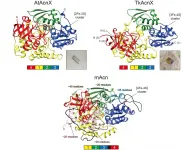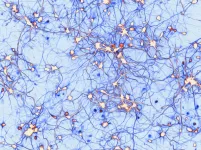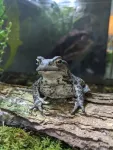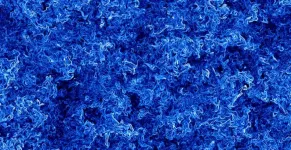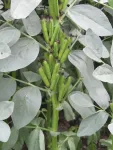Creating a lab mangrove helps to identify new bacteria
2021-07-08
(Press-News.org) A pioneering cultivation strategy that recreates a mangrove environment in the lab has enabled identification of novel bacteria residing in Red Sea mangroves and will help improve understanding of mangrove ecosystem stability, resilience and sustainability.
Mangroves are highly productive, dominant coastal ecosystems that line between 60-70 percent of the world's tropical and subtropical coastlines. They harbor diverse microbial communities thought to make up 80 percent of the ecosystem's biomass. Many of the microbial species, families and taxa are unknown to science.
The cultivation strategy was developed by a team of KAUST researchers, including Fatmah Sefrji and Ramona Marasco.
"Red Sea mangroves are particularly interesting because they represent an extreme and unique version of mangrove environments that are exposed to stressful conditions, including high temperatures, salinity and oligotrophy," says Sefrji. "These environmental stresses exert a strong selective force on the mangrove's microbial communities and so favor the presence of unique species and families."
The team's key challenge was to recreate the mangrove environment in the lab so that they could grow the bacteria in their natural setting. They moved portions of the mangrove sediment and seawater to lab-based growth chambers because in artificial media, it is nearly impossible to reproduce all the molecules, such as nutrients and vitamins, and the molecular cross-communication that are necessary for healthy microbial growth.
"It is difficult to successfully cultivate so-called 'microbial dark matter'-- the environmental microorganisms that are unknown to science and have never been cultured before," says Marasco. "There are so many molecules and parameters important for the growth of a given microbial species from a particular setting."
Once the growth chambers were set up, the team cultivated the resident microbial communities by feeding them regularly with nutrients taken from the natural mangrove environment. They then analyzed the genotypes and phenotypes of selected bacterial isolates, discovering a series of new species, and even taxa. Two papers highlight the first two organisms new to science, the bacterium Mangrovivirga cuniculi (new family Mangrovivirgaceae) and a new bacterial strain called Kaustia mangrovi.
"Both organisms grow in the presence of relatively high salinity and temperature and in the pH range typical of mangrove sediment on the Red Sea," says Sefrji. "Despite their similar physiology, each bacterial isolate showed unique physical and biochemical characteristics, confirmed also by the analysis of their genomes."
The researchers hope the identification of these organisms will contribute to a wider understanding of mangroves and provide insight into effective ways of protecting these unique ecosystems, particularly in light of climate change. The ability to cultivate Red Sea mangrove bacteria at scale could have significant implications, and not just for mangroves themselves.
"Cultivating members of a microbial community adapted to the variable and harsh conditions of the Red Sea may represent an important source of metabolites and enzymes for future biotechnological applications," says Marasco. "For example, bacteria that promote plant growth could boost mangrove seedling establishment, while others could confer salt tolerance to cereal crops. We are actively characterizing our novel strains for such capacities."
INFORMATION:
[Attachments] See images for this press release:

ELSE PRESS RELEASES FROM THIS DATE:
2021-07-08
The aconitase superfamily currently contains four functional enzymes including the archetypical aconitase (referred to as "other aconitase enzymes"), and one hypothetical aconitase X (AcnX). The aconitase enzymes catalyze the homologous stereospecific isomerization, and their three-dimensional structures and catalytic mechanisms including the [4Fe-4S] iron-sulfur cluster are very similar each other (Fig. 1a). Therefore, the aconitase superfamily (enzymes) is a typical example that is suitable for the so-called "recruitment hypothesis of enzyme evolution"; the gene duplication of multi-specific enzymes, followed by the narrowing of substrate specificity (ref. 1).
AcnX (subfamily) is further classified into "AcnXType-I" consisting of a single ...
2021-07-08
Researchers at The University of Queensland, working to gain a better understanding of how brain cells work, have discovered the underlying mechanism of a rare genetic mutation that can cause epilepsy.
Dr Victor Anggono from UQ's Queensland Brain Institute said his team made the ground-breaking findings while researching nerve cell communications, which are an important process in normal brain function.
''We're both excited and astounded to make such an important contribution to the field of cellular and molecular neuroscience,'' Dr Anggono said.
He stressed that the mutation was extremely rare, with only one reported case in the world to date.
Dr Anggono's team studied protein structures, called receptors, that ...
2021-07-08
A study by researchers in the Scene understanding and artificial intelligence (SUNAI) research group, of the Universitat Oberta de Catalunya's (UOC) Faculty of Computer Science, Multimedia and Telecommunications, has developed a method that can learn to identify mosquitoes using a large number of images that volunteers took using mobile phones and uploaded to Mosquito Alert platform.
Citizen science to investigate and control disease-transmitting mosquitoes
As well as being annoying because of their bites, mosquitoes can be the carriers of pathogens. Rising temperatures worldwide are facilitating their spread. This is the case with the tiger ...
2021-07-08
While the UK was in lockdown, certain species of captive amphibians became more visible, a new study suggests.
The COVID-19 pandemic forced the closure of zoos across the UK for several months from March 2020, with gradual re-openings from summer into autumn and winter.
These closures provided a team of researchers, from the University of Exeter and WWT Slimbridge Wetland Centre, a unique opportunity to study the effect of visitor presence on several species of amphibian at Slimbridge.
The project assessed the number of individuals of six species - common toad, common frog, smooth newt, pool frog, golden mantella and golden poison dart frog - visible to observers while their exhibit was closed, when it partially reopened to more staff and when it reopened to visitors.
"Amphibians ...
2021-07-08
Lung cancer has the highest mortality rate of all cancers, and treatment options are extremely limited, especially for patients with oncogenic mutations in the KRAS gene. A great deal of hope was invested in the licensing of immune checkpoint inhibitors, but the reality is that some patients respond very well to this treatment while it is completely ineffective in others. In a paper just published in Science Translational Medicine, a MedUni Vienna research group led by Herwig Moll (Center for Physiology and Pharmacology) identified a potential marker for the success of immunotherapy in lung cancer patients and explained the underlying molecular processes.
K-Ras it is a monomeric G protein that plays a key role in the growth of malignant ...
2021-07-08
When you pour cream into a cup of coffee, the viscous liquid seems to lazily disperse throughout the cup. Take a mixing spoon or straw to the cup, though, and the cream and coffee seem to quickly and seamlessly combine into a lighter color and, at least for some, a more enjoyable beverage.
The science behind this relatively simple anecdote actually speaks to a larger truth about complex fluid dynamics and underpins many of the advancements made in transportation, power generation, and other technologies since the industrial era--the seemingly random chaotic motions known as turbulence play a vital role in chemical and industrial ...
2021-07-08
The ratios between the lengths of the second and fourth fingers, known as the 2D:4D ratio, are different in males and females, which is often explained by levels of androgens and oestrogens. However, an alternative theory states that men have bigger body parts, including fingers, which impacts the 2D:4D ratio. A research team including HSE University scholars refuted this hypothesis by collecting data on finger length from 7,500 people. The results of the study were published in Scientific Reports. https://www.nature.com/articles/s41598-021-87394-6
The ...
2021-07-08
A new study conducted before COVID-19 busted open the leaky pipeline for women in leadership underscores the bias that men are naturally presumed to have leadership potential and women are not and highlights the increased efforts needed by organizations to address the incorrect stereotype post-pandemic.
The research published in the journal Frontiers in Psychology highlights the continuing bias in leadership assessments of women, explores the contradictions between the perception and the reality of women's leadership, and shows why the slow rate of career advancement for women will likely continue at a snail's pace.
"The impact of the COVID-19 pandemic on women's career progression will likely be felt for years to come as ...
2021-07-08
Faba beans are an excellent source of food protein, but about 4% of the world's population are afflicted by favism, which renders them sensitive to the faba bean anti-nutrients vicine and convicine. Now, an international research team has identified the VC1 gene as responsible for the production of these compounds.
Faba beans have actually been a source of food protein since pre-historic times, but a fraction of the population, mostly from warm southern regions, cannot tolerate them. Pythagoras and his followers avoided them, and Roman priests of Jupiter ...
2021-07-08
You have probably often said to yourself: "This time, I will only buy what I need!" But then you still ended up coming home with things that were not on your shopping list.
How can you prevent such impulse buying? A team from the Chair of Psychology II at Julius-Maximilians-Universität (JMU) Würzburg in Bavaria, Germany, looked at this question. The answer is not that simple, says psychologist Dr Anand Krishna. It depends on what type of person you are: a pleasure-seeker or a person who focuses on security.
Anand Krishna and his JMU colleagues Sophia Ried and Marie Meixner have published ...
LAST 30 PRESS RELEASES:
[Press-News.org] Creating a lab mangrove helps to identify new bacteria

